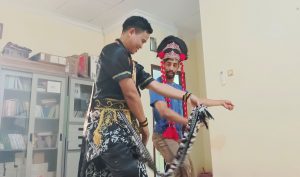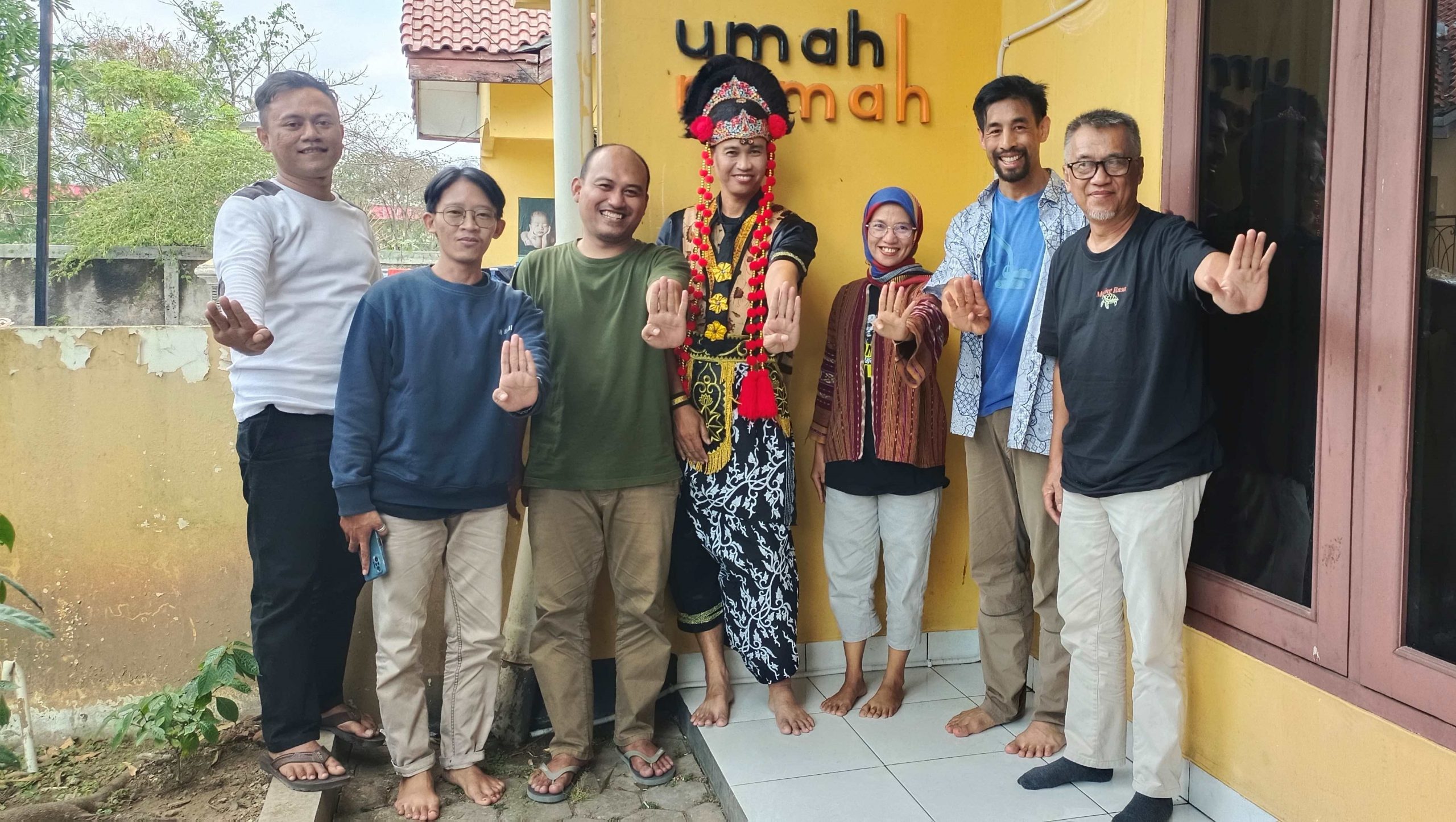By: Ahmad Hadid
Andrew Suseno, the founder of Moving Rasa, United States of America, looked enthusiastic during a discussion with Umah Ramah on Monday, August 21, 2023. Apart from discussing the work of each organization, the meetup between the two was also enlivened by a performance of Tari Topeng Cirebon (the Cirebonese mask dance).
Moving Rasa, founded in East Harlem, New York, is a movement and contact dance that explores how our consciousness emerges in relation to one another. Through Moving Rasa, Andrew supports others to find their sense of movement by combining Western somatic training and therapy with the search for social justice and Indonesian philosophy.
Andrew, had the opportunity to visit Indonesia as part of his family gathering and get to know more about the culture and local wisdom of his parents’ country. His parents are Indonesian citizens who live in America while Andrew was born and raised there. It was his first time setting foot in Indonesia.
Umah Ramah was one of the many places he visited. For Andrew, Umah Ramah is family. Moving Rasa and Umah Ramah previously met online often. In general, both Moving Rasa and Umah Ramah are working together in humanitarian work to eliminate sexual violence, which was first met by Nina Jusuf from NAPIESV.
In this brief meetup, Andrew shared how Moving Rasa works in untangling sexual violence cases. He created safe spaces for gatherings. In that space, people are free to tell stories, move, dance, and make physical contact without violating the freedom of others.
He said, people who experience sexual violence generally experience trauma with physical touch. Dancing can help slowly unravel the physical trauma experienced. Before performing the dance, everyone has the right to tell which parts of the body can and cannot be touched. The rules of each individual then become a shared commitment, then they dance together to unravel their respective traumas.
Through dance, bodily trauma can also be released into the universe. Andrew practiced the dance by attaching his body to the walls and objects around him.
“When the body comes into contact with objects, the body will transfer its burdens to these objects. It is then that feeling takes on its role in deciphering physical trauma. Slowly these feelings come into contact and break down one another,” said Andrew.

After the discussion, the event continued with a performance of Tari Topeng Cirebon (the Cirebonese mask dance) which has five characters: Panji, Samba, Rumyang, Tumenggung, and Klana. The dance is performed by Kadi, a dancer who has dedicated his life to dancing for twenty years.
After finishing dancing the five dances with masks, Kadi from LKP Primatari Cirebon, then explained the symbolic meaning of each dance character and mask. One of the explanations given by Kadi was about the Panji Dance. He considers this dance to be the most difficult because the movements are very smooth while the accompanying songs have a high tempo. The dancer must still show the smoothness of the movement but at the same time the movement is required to be powerful.
“One of the movements in the Panji mask dance is a message to be considerate,” said Kadi while practicing the movement. Namely the movement of the two hands in the middle of the chest, which is followed by the movement of the fingers pressing against the sternum like piano keys.
After the explanation was finished, we discussed the characteristics of the mask, related to emotions, feelings, and Cirebon nature. After that, Andrew was asked by Kadi to try dancing the Klana mask. Andrew practiced for a while to get to know the dance better. ***
This article was translated by Napol Riel.
